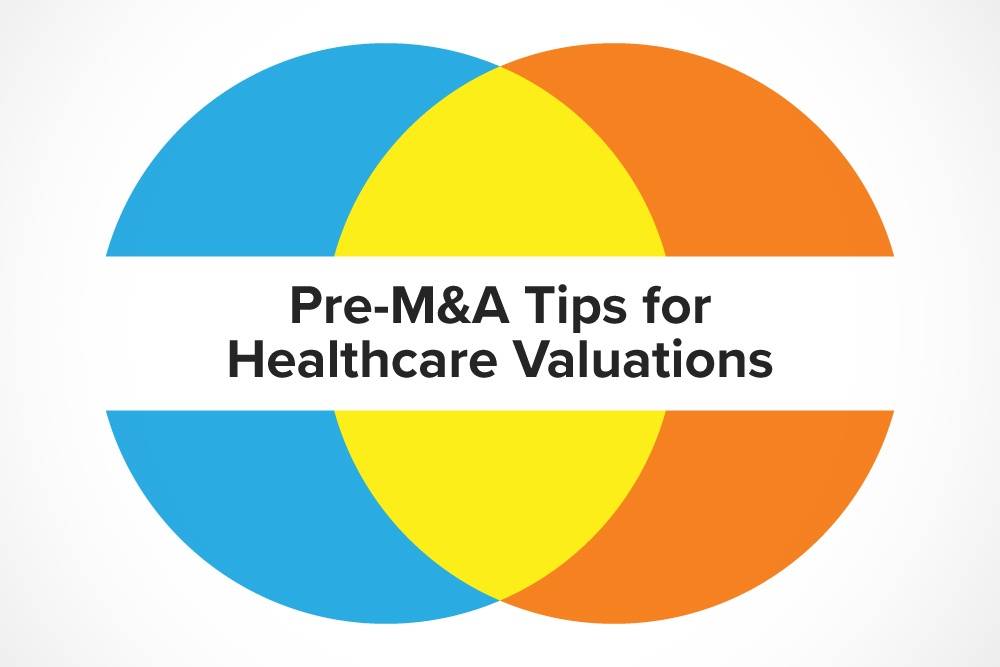The healthcare space is equal parts exhausting and perplexing. With continually evolving regulations and an incredibly dynamic, even volatile marketplace, the healthcare industry isn’t for the weak of heart, pun somewhat intended. The very nature of the industry lends itself to economies of scale that, of course, don’t bode well for smaller and mid-sized providers that too often feel like they’re a dingy adrift in a busy port, struggling to stay afloat in the wake of the large provider cruise ships.

Obviously, M&A lends itself to the industry, giving companies a somewhat quick fix to compete more effectively with the bigger healthcare names. However, given Embark’s propensity to steer our corporate brethren clear of financial puddles in the sidewalk, we naturally have a few thoughts on the matter, especially for potential sellers in this crowded industry. To help you find the highest valuation possible, we ask you to spend a few moments pondering some basic accounting tips before diving headfirst into the healthcare M&A pool.
Be an Open Book
Not exactly a news flash -- buyers will need to dig through your sales and operations to provide you with an accurate valuation. Ready your current net worth by analyzing your elements of value. This thought shouldn’t cause heart palpitations since a CPA with M&A experience, if required, should have no trouble walking you through the valuation minefield, examining your assets, sales, and workforce to help your inner beauty shine through. Likewise, be prepared to provide the following:
- Balance sheet: Clean houses naturally lend themselves to higher valuations. A neat and tidy balance sheet is appealing to buyers so satisfy your accounts payable and collect your accounts receivable to demonstrate that clean house. Your ability to collect payment from patients and insurance companies goes a long way in boosting your valuation.
- EBITDA: Potential buyers need to understand how efficient your company is. Your income statement will give them insight into your margins and collection rate, both of which go a long way in providing buyers the assurances they need. Since EBITDA reigns supreme when calculating valuations in healthcare, just as it does in many sectors, reducing operational costs will show you can run lean and mean to enhance net profits.
- Non-Recurring Items: As history poignantly demonstrates, a single iceberg can sink even the biggest of ships. Don’t lose sight of non-recurring items like bonuses and moving costs in the midst of concentrating on margins and operational costs. Non-recurring items can have a significant impact on the purchase price so make certain to identify those icebergs in advance and address them accordingly.
Speaking of purchase price, the healthcare sector displays varying multiples of EBITDA depending on the size of the organization and its core competencies. Generally speaking, investors perceive larger enterprises as having less risk and greater potential for growth due to economies of scale, customer/patient base, brand recognition, and a host of other factors. Therefore, larger healthcare organizations realize far higher multiples, on average, than their smaller counterparts, primarily ranging between 5 to 15 times EBITDA for the entire industry.
A Solid Brand Goes a Long Way
Somewhat intangible factors also play a pivotal role in evaluating your healthcare company. Your brand and reputation also play a critical role in determining the value of the enterprise, particularly in the healthcare industry where the public spotlight can be searing and federal regulators harsh. Before you start the process, have your marketing department concentrate on developing a strong but empathetic voice that resonates with the consuming public and builds credibility within the industry.
While your past performance will still carry the most weight when determining value, don’t forget to pay sufficient attention to your brand, specifically your reputation and public perception, because it still wields a mighty stick when it comes to purchase price. Likewise, your demonstrable ability to attract top talent, whether that’s a world-renown neurosurgeon, a cutting-edge cancer researcher, or even a well-regarded administrative team, will all play significant roles in your valuation. Distinguish yourself from the competition and demonstrate to investors that your organization is unique, better, with a rosy future and solid foundation.
Don’t Forget You’re Still Running a Business
This thought seems obvious but is still somehow overlooked amongst the M&A frenzy. Yes, you are actively taking action on your financials to maximize value by cutting costs, increasing margins, and generally cleaning up the house. However, all that effort will be for naught if you lose focus on your daily operations and allow the business to suffer. Tides change quickly in the healthcare industry so taking your eye off the road for even a moment could have lasting repercussions.
This notion includes your communication and approach with your employees. A wave of attrition from a scared workforce, particularly managers, will have a significantly adverse effect on your valuation. To prevent such an occurrence, do everything you can to maintain stasis within your employee base because, as you’ve heard main times, cooler heads will prevail.
The healthcare industry is turbulent enough without stepping on your own toes during the M&A process. Follow our advice and be diligent in your efforts to make the experience as efficient and lucrative as possible. Look where you’ve been, where you are, and where you’re trending towards to get a well-rounded perspective that encompasses your revenue patterns over the last three years or so -- your ability to grow and scale up will play a significant role in your valuation. Of course, Embark is always available to step in and help you as you prepare, able to assist in cleaning up financials, sort through messy data and processes, and throw in our transactional two cents whenever needed. Keep calm, carry on, and get to work because in the healthcare industry, only the strong survive.








